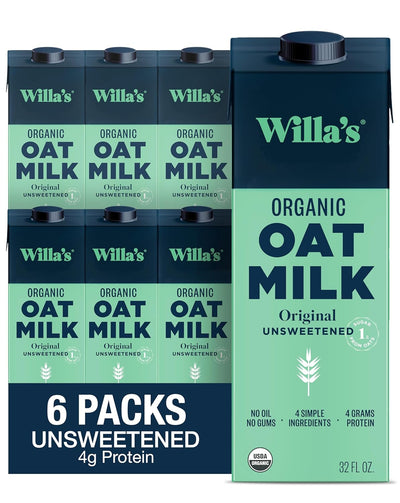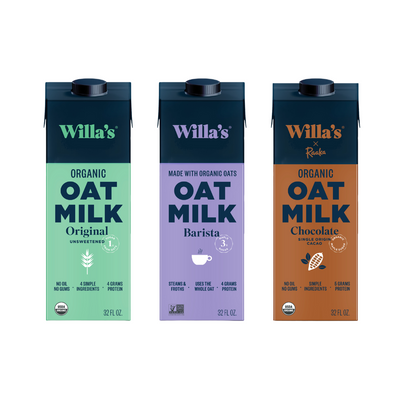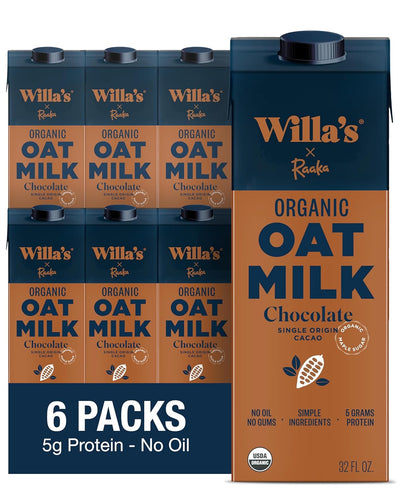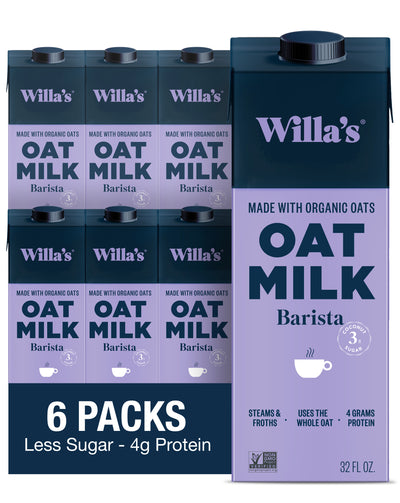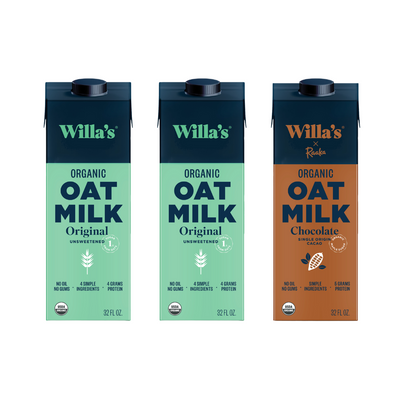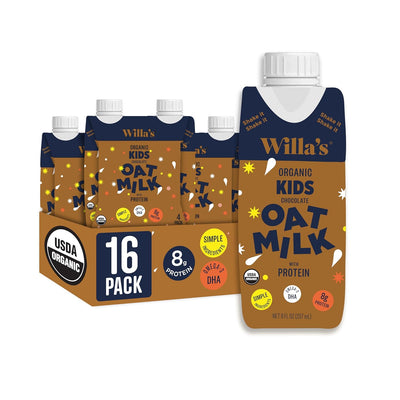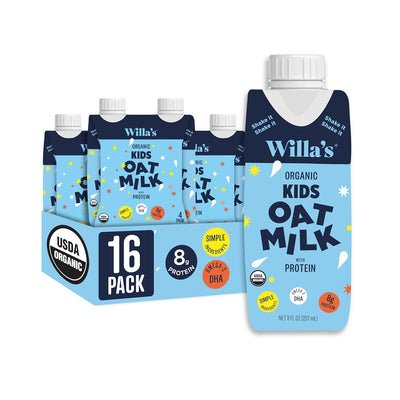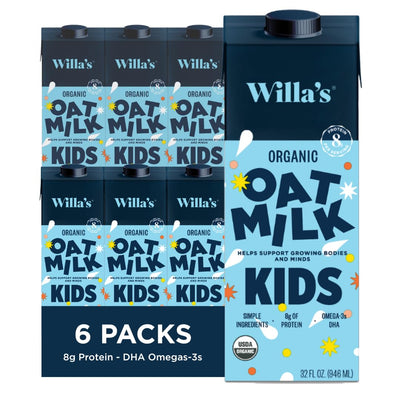What Makes Whole Grain Oat Milk Healthier?

Whole grain oats are known as the tiny but mighty nutritional force. They're oats in their most honest, natural, edible form. They have the oat’s groat intact and retain protein and nutrients like beta-glucans, a sugar which cleanses the gut and supports immune health, soluble, insoluble and prebiotic fiber.
What to Look For in Oat Milk and Oat Products?
As we’ve mentioned here, it’s important to know what’s in your oat milk because it varies greatly in terms of ingredients, nutrition and sustainability. Some oat milks use only part of the whole grain oat, meaning you get a lot more starch and sugar and a lot less protein and fiber that you think you're getting - if any at all. On top of that, the higher sugar levels can undermine the benefits we associate with whole grain oats - like their blood sugar and appetite regulating qualities.
Reading nutrition labels is a good practice for any food product, and is especially important to ensure that you are getting whole grain oats in your oat milk. Avoid oat milks that list ‘oat base’ or just ‘oats’ — they’re delivering more starch than benefits. Also keep an eye out for oats that aren't certified organic. They can contain unsafe levels of pesticides, including RoundUp.
What’s in a Whole Grain Oat?
And just what sets apart whole grain oats from regular oats and why are they so important? The answer to these questions is found in their anatomy. In nature, whole grain oats are made of two components: the husk and the groat. The husk is inedible, removed from the oat in even the most minimal of production processes.
After removing the husk, you are left with the groat. This is the part you want to pay attention to. The oat groats include the good stuff: the bran, endosperm and germ of the oat. These three components are what makes up whole grain oats and are responsible for oats’ status as a nutrient-rich, health promoting powerhouse.
Oat bran. The bran is the outer shell of the oat groat— an edible, multi-layered skin with a nutty flavor and is packed with soluble fiber, protein and vitamin B. In addition to being found in whole grain oats, oat bran is also sold separately from its groat counterparts. The bran is the main source of a whole grain oat’s fiber and can be purchased as cereal or a nutritious additive to supplement your favorite recipes.
Endosperm. Inside the bran’s protective layer is the endosperm. The endosperm takes up the largest space within the oat, providing carbohydrates and protein. This is the starchy part of the oat. which is often left after whole grain oats are processed and stripped of their bran and germ. When consuming the endosperm alone, reduces a whole grain oat’s fiber content by 25% and removes at least 17 essential nutrients. Once oats are refined, these nutrients are nonexistent.
Germ. The germ is the reproductive component of a whole grain oat. New oats sprout from the germ, taking energy from the endosperm that surrounds it. The germ is rich in protein, vitamin E and those phytonutrients we mentioned.
Why Choose Whole Grain Oats?
In short, the less processed the oat, the more nutritional they are. Knowing this, our love for transparency and organic ingredients should come as no surprise.
Honesty in ingredients and sustainable nutrition are the basis of our company. We use the entire whole grain oat to produce the most nutritious organic oat milk possible– free of GMOs and always rich in fiber and protein. Plus, using whole grain oats is the most sustainable way to make oat milk without producing unnecessary food waste. Willa’s Oat Milk includes all of the whole grain oat. We don’t throw any part of the oat away.
Photo credit: Nicolas Messifet
For more on the benefits of oats, check out our post, here.
To better understand what makes oat milk the most sustainable choice, check our our rundown of plant based milks here.
And you can always find more on our processes and ingredients in our FAQs.

